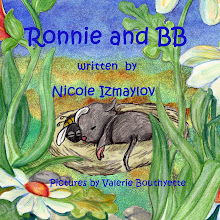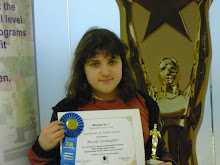Plot. H’what is this mysterious thing known as a plot? The plot is very important. It defines half of the things that happen in the story (the characters define the other half). Great, we know that a plot is important, but how in the world do you find one?
You have two choices. Either follow en masse and pen a picture book about sparkly vampires and their serious need to visit a dermatologist, or be inspired. Might I suggest the second option?
First, think about your life. Any particular anecdotes that spring to mind? Can you change it a little so that it applies to children? For a serious example, say that, for a few years now, you’ve wanted to get rid of your old Toyota and buy that luxurious Porsche, and finally you’ve saved up the money. However, before you can buy your dream-hicle, your aunt falls down some steps and breaks her hip. Even though you really want that expensive gas-guzzler, you give up the money so your auntie can walk again. Well, move that into a kids’ universe. Tami wants to purchase an expensive new doll that costs, say, twenty dollars. Tommy, her brother, scoffs at the saving. They both receive five dollars a week as an allowance. Every weekday, the ice-cream man comes around, selling cones a dollar each. Tommy buys a cone each day, spending all five dollars the week. Even though Tami truly wants a cone and can’t stand her brother eating one, she keeps on saving her money. At the end of the month, Tami has twenty dollars and Tommy has none, having wasted it all. Proudly, Tami prepares to buy the doll. On the day before, however, Tommy accidentally breaks his knee playing soccer. Tommy can’t play soccer now, and he’s terribly upset. Tami swallows her pride and, to make Tommy feel better, she spends her twenty dollars on a soccer-ball-player action-figure. Tommy thanks Tami, but Tami is sad because she didn’t buy that doll she wanted. Two months later, it’s Tami’s birthday, and Tommy, having saved all of his allowance, gives Tami two dolls—one for her, and one for him to play with her. Tommy agrees to play dolls with Tami. Tami knows that she did the right thing. It’s a lesson in giving gifts, in savings, and in one good deed deserves another. Your life experience was just turned into Tami’s Gift, a picture book.
Next time, I’ll discuss nature as an inspiration.
~Nicole Izmaylov
Thursday, October 28, 2010
Thursday, October 21, 2010
HTWAPB: Category, Category, Category!
At the insistence of several of my peers, I've decided to do a series entitled How to Write a Picture Book (HTWAPB)!
The first thing you need to do is decide to write a picture book. Now you have to decide something very important. There are basically three very common types of picture books. First, extremely simple ones for very young readers, usually ones meant to teach something, that sometimes follow a simple plot with little to no details i.e.
(1) "A is for apple, B is for bread; C is for Cutie Cat curled up on the bed."
Or:
(2) "1 bag of flour, 2 cups of sugar, 3 eggs, 4 sticks of butter . . . count, count, count, you made a cake!
Then, there are more "advanced" books, often with "cute" or "cartoony" illustrations, that follow a basic plot with many details that kids can easily connect with i.e., It was Elmo's birthday! Everyone was very excited. Elmo wondered what present he would get. The day started out beautifully. The sunlight streamed in from the window. Oh boy! thought Elmo. Mama Monster came in with a big birthday cake. “Happy birthday, little Monster,” she said. [etc.etc.]
Finally, there are the very advanced picture books, often with much more serious artwork, that usually tell a serious, very advanced plot and use the pictures as a means to express powerful images. These advanced ones are the ones you see about historic events, heritages (like the famous African-American “flying” picture books), and things like that.
But there’s an additional fourth category that is not so common. This fourth category consists of poetry picture books. These tend to fall somewhere between the second and third categories. Then is the fifth category of nonsense or novelty books. Nonsense books are silly (meant in a complimentary way, of course)rhyming books like those by Theodore Geisel, which usually fall between the first and second categories, and novelty books are those with “tricks,” like holographic pages, shiny stickers, coloring pages included, etc., that also typically fall between the first and second categories. From these five categories, one would first choose which one to do. Then the proper subject matter can be chosen.
First, you could pick between the first three categories, then maybe also add one of the last two. Theoretically, The Cat in the Hat is a Category 2 Nonsense Book (or Category 1, depending on how you look at it).
What category are you looking to put your book in?
~Nicole Izmaylov
The first thing you need to do is decide to write a picture book. Now you have to decide something very important. There are basically three very common types of picture books. First, extremely simple ones for very young readers, usually ones meant to teach something, that sometimes follow a simple plot with little to no details i.e.
(1) "A is for apple, B is for bread; C is for Cutie Cat curled up on the bed."
Or:
(2) "1 bag of flour, 2 cups of sugar, 3 eggs, 4 sticks of butter . . . count, count, count, you made a cake!
Then, there are more "advanced" books, often with "cute" or "cartoony" illustrations, that follow a basic plot with many details that kids can easily connect with i.e., It was Elmo's birthday! Everyone was very excited. Elmo wondered what present he would get. The day started out beautifully. The sunlight streamed in from the window. Oh boy! thought Elmo. Mama Monster came in with a big birthday cake. “Happy birthday, little Monster,” she said. [etc.etc.]
Finally, there are the very advanced picture books, often with much more serious artwork, that usually tell a serious, very advanced plot and use the pictures as a means to express powerful images. These advanced ones are the ones you see about historic events, heritages (like the famous African-American “flying” picture books), and things like that.
But there’s an additional fourth category that is not so common. This fourth category consists of poetry picture books. These tend to fall somewhere between the second and third categories. Then is the fifth category of nonsense or novelty books. Nonsense books are silly (meant in a complimentary way, of course)rhyming books like those by Theodore Geisel, which usually fall between the first and second categories, and novelty books are those with “tricks,” like holographic pages, shiny stickers, coloring pages included, etc., that also typically fall between the first and second categories. From these five categories, one would first choose which one to do. Then the proper subject matter can be chosen.
First, you could pick between the first three categories, then maybe also add one of the last two. Theoretically, The Cat in the Hat is a Category 2 Nonsense Book (or Category 1, depending on how you look at it).
What category are you looking to put your book in?
~Nicole Izmaylov
Subscribe to:
Posts (Atom)




